Equipment
500 wins: Mitsubishi Chemical’s history of tour success, innovation

Mitsubishi, broadly, is one of the most recognizable brands in the world, owing largely to the visibility Mitsubishi Motors. Golf gearheads, however, are just as familiar with Mitsubishi Chemical, makers of some of the most popular golf shafts at both amateur and professional levels.
With respect to the latter, Mitsubishi’s history is impressive: More winning driver shafts than any other brand for 16 of the past 17 years on the PGA Tour—and the past seven years straight on the European Tour. Indeed, Mitsubishi Diamana models also have more than 270 wins and Tensei has 80. Kuro Kage and Fubuki, names well known to GolfWRXers and often seen in tour WITBs over the years, have more than 80 wins combined.
With win totals this high across multiple shaft families, it shouldn’t be surprising to hear a Mitsubishi driver shaft was played for the 500th time in a win on a major professional tour.
A little more about the makers of the Diamana DF gamed in victory number 500. In the golf equipment world, you’ll often see Mitsubishi designated “MCA.” Perhaps puzzling to the carbon fiber and kick point neophyte, “MCA” merely stands for Mitsubishi Chemical America. As a sidebar, many GolfWRXers familiar with “MCA” think it denotes the combined companies of Mitsubishi Chemical and Aldila — both venerable shaft houses in their own right — as Mitsubishi acquired Aldila in 2013, but isn’t the case.

With respect to Mitsubishi proper, the Japanese company established a carbon fiber division way back in 1974. In other words, the company, broadly, has been active in the space since, well, it was a space to be active in. Mitsubishi began making carbon shafts in 1979, doing so for decades for its domestic OEM partners in Japan.
It wasn’t until 2004, however, that Mitsubishi Rayon Composites, Inc. proper hung a shingle in Carlsbad, California, to begin developing its own branded products for sale to the aftermarket to satisfy the graphite boom.
The first solo Mitsubishi win (non co-branded shaft) came in July of 2004 at the European Open, and it was also the first victory for the Diamana.
In any industry where innovation and improvement are expected with each product iteration and where new materials are being developed all the time, it’s difficult to pinpoint inflection points and key technologies.

Nevertheless, we asked Mark Gunther, MCA’s Vice President of Sales & Marketing, to highlight a few touchstone innovations and how they informed future shaft developments.
Gunther told us the decision to use metal wire in the butt section of the Diamana Ali’Islei shaft in 2008 led to the development of the TiNi Wire prepreg (the sheets of carbon fiber and resin that are rolled together into golf shafts), which featured in the Kuro Kage line. That technology eventually begat the 304 Stainless Steel Metal Mesh, which is the centerpiece of the popular MMT (Metal Mesh Technology) iron shafts, which debuted in 2019.
Additionally, Gunther highlighted the use of pitch fiber in Diamana X shafts in 2012. Shortly after Mitsubishi merged its pitch fiber production with, at the time, Mitsubishi Rayon’s carbon fiber division to form one business unit, pitch fiber was used for the first time in an $800 Mitsubishi shaft. This led to the use of pitch fiber in the third generation of the Diamana series, and later, the popular Aldila Rogue series. It continues to be the platform for innovation in MCA pitch fiber today.

Mitsubishi has leveraged the GEARS full swing and body tracking system as a secondary testing process after running products through internal testing protocols. MMT (Metal Mesh Technology) shafts were validated via GEARS prior to PGA Tour seeding and rapid adoption by many of the game’s best.
With these innovations as a bedrock — and 500 professional wins under their belts — looking to the future, Gunther says
“There’s every reason to be excited about the future. We’ve built a very talented team that covers tours and golfers globally, we continue to create breakthrough technologies and materials that you’ve seen in Tensei Pro White 1K and in things you’ll see soon like Kai’li and Ascent, and we’re more committed than ever to validating the performance of our products through testing systems like GEARS. Whenever it’s possible to turn over a stone to help golfers shoot lower scores, we’re going to explore it.”
No doubt those explorations — and foundational shaft families like Diamana and Tensei — will have Mitsubishi’s win tally ticking toward 600 faster than, say, a Mitsubishi Lancer EVO GSR.
- LIKE28
- LEGIT5
- WOW1
- LOL0
- IDHT0
- FLOP0
- OB1
- SHANK2
Equipment
Q&A: The truth behind Bryson DeChambeau’s new Avoda irons from company founder Thomas Bailey

During the week of the Masters, news broke that Bryson DeChambeau was using 3D-printed irons from a relatively unknown company called Avoda Golf.
DeChambeau fired an opening-round 65 at Augusta National using the irons, sending the equipment world into a frenzy trying to figure out who the company is, and what’s different about the irons. Information about the irons, however, wasn’t so easy to find. No one really knew much about Avoda or his new iron designs.

Then, ahead of the 2024 U.S. Open at Pinehurst, GolfWRX.com got its first in-hand look at the irons, and DeChambeau provided a public explanation of the flight-correctional “bulge” that the irons have on their faces.
DeChambeau went on to win the U.S. Open using the bulge-faced 3D-printed irons, but we still didn’t know much about the irons themselves.
Until now.
Recently, GolfWRX.com spoke to Thomas Bailey, founder of Avoda Golf, to find out more about the company, and DeChambeau’s mysterious irons. Enjoy our full Q&A with Bailey below!
Andrew Tursky, GolfWRX.com: So what is Avoda? How did the company get started in the industry?
Thomas Bailey, founder of Avoda Golf: Originally, I just wanted to make myself a set of golf clubs. That’s the truth. So that’s a year ago to date of Bryson winning the U.S. Open.
It’s been a crazy year.
I wasn’t quite happy with what I was looking for from a club and what was available on the market. I played around with a lot of the same-length products for a while. I got to the point where I was grinding the heads myself, taking heads and grinding them away to get the weights I wanted, to get them the appearance how I wanted. And I got pretty dialed in on a set I wanted over a two-year period. It just felt like it had been mauled by a bench grind.
So we were using raw heads, from Kyoei, and taking them down to weight. When I say we, that’s myself and Mike Schy, Bryson’s long-time coach from out at Dragonfly Golf Club in California. We were just grinding away golf clubs, seeing if we could create the ultimate club for what I wanted; and we got it. It just felt like it had been attacked by a bench grind.
So the mission then came in to make it presentable. My brother actually worked in the firearms industry and had a lot of supplier and manufacturer relations, so he worked on finding me a manufacturer who would be happy to put together the clubs for the specs I wanted. And we got there. We went through a number of suppliers and manufacturers to try and get to the point of what we wanted. We got it and had a prototype set come in around October last year, which was spot on. It was exactly what I wanted.
The goal was when I got that set in was to maybe make 50 sets and sell them, and fund my own golf career and my own golfing habits.
So right around that time, Bryson was coming back into town. He just had a win and shot 58 with the new driver in the bag, and he wasn’t happy with irons. They didn’t complement what he’d got right with the driver. The driver had more onset with more bulge to it. The swings he was making with that and having great success off the tee just didn’t work when he went to an iron. So he was saying say he would be fighting his iron play, fighting a left miss if he made the swing he wanted to, and then fighting a right miss to compensate for it. And that would then leak back into the driver to where he’d be missing with the driver, as well. He knew he needed new irons in the bag.
I know him and Mike Schy had explored a few options to try and find someone to do the irons. Right around that point, I told Mike that I’d been working on my own set of irons, that we could always explore doing something for Bryson, as well. And that’s kind of where it started. It’s like, well, nothing to lose. Let’s go for it. Bryson was in town in September, testing some irons and stuff again, having the raw Kyoei’s and grinding them down, getting the appearance he wanted.
He was on the bench grind, as well, and they got a head, and then the conversation started around putting bulge into an iron.
Mike goes, “Well, why don’t we test bulge on an iron?”
And Bryson asked, “Can we do that?”
And it was like, well, let’s find out.
So, he actually went into the academy where he’s got his workshop and started grinding away the toe on the Kyoei heads to try and put a little bit of curvature to it.
Wait, Bryson himself was on the grinding wheel?!
TB: Bryson was on the grinding wheel shaping the club to how he wanted them to look.
We actually had my partner’s dad, he was welding up the back of the club to give him extra weight to play with on the grinding. So it was a right interesting process, but he got it down to the shape he wanted, and then they started grinding. Mike went back into the academy and started grinding away some other toe section to get some curvature on the face to start testing the bulge-face idea, and found out very quickly when he was hitting them.

GolfWRX’s in-hand photos of Bryson’s 5-iron at the 2024 U.S. Open
Bryson went back to hit them and said, “Yeah, this is it. This is what we need to test.”
So, I set about making two identical heads – 7-iron heads – to the specs he wanted to see weight-wise and the width of the head he wanted to see. And they were CNC forgings to start with. So we had a flat head, or flat face, and then we did an identical club with a curved face, so we could hit them, start getting some numbers, and seeing what the difference is between them. And immediately, it was a night-and-day difference on the mishits, and just the overall performance of the club. It was more than just the mishits, so we knew we needed to put it into a full set.
He had very specific requirements he wanted to see in terms of the width of the head, the appearance from the top line. He liked the thicker top line. He liked the wider blade. When you start doing that, the head weight goes through the roof, so it couldn’t be a one-piece forging. It had to be hollow-body, which also had the advantage of reducing the spin rate, which is something he’d been struggling with for a while.
So we went about putting together the first full prototype set, which came in, we had it completed around end of January this year. He did some testing with it, took it to Mayakoba, had it in the practice rounds there. He decided not to put it in play just because we overdid the face curvature to begin with, to where we’d actually see the opposite miss, not the ideal. And then we went out making another prototype round, tidying up some of the aesthetics on it a little bit, but, again, dialing in the face curvature.

Bailey says Bryson prefers irons that have thicker top lines, wide faces from heel-to-toe, onset, and a square, symmetrical-looking face (as much as possible when there’s a curve) / Photo credit: Avoda Golf
They arrived the week before the Masters. We strongly believe we were still in a prototyping phase there, and did not expect them to be in play at The Masters. So when we found out Tuesday at the Masters that they were going in play, we went, “Uh, right.”
So him switching into the irons at the Masters was news to you, too?
TB: It was, well, there was some stuff that was going on leading up to that. He had them. He was in testing with them a week and a half before, and he took them to Miami, with the full intention of playing them in Miami.
We sent some stuff off for USGA testing, because, again, we’re still in prototyping at that point. So we sent them off. We wanted to get them tested just in case he did put them in play. We had a couple of groove issues that had to be sorted with the 3D-printing process, just some inaccuracies in the groove. His manager, Connor (Olson), over in Florida, was working hard on fixing them over the weekend before The Masters, and then we had them re-tested on the Monday.
Half the set was good to go, but we needed to get another set over there to fix a couple of clubs. So I get a call on Monday afternoon of Masters Week. I’m on the West Coast, in California, and I get a call at 4:30 in the afternoon from Connor saying we need the other set here, right now. And I’m thinking, “How am I getting this other set for you anytime soon?” And if it was Wednesday, it would have been too late for him to put them in play.
So, luckily, we rushed over to UPS. The guy said that the out-of-state overnight had already gone. We’d missed it, but he put the address in, and said we’ll see if we can get it out on the first shipment in the morning. And when I’m putting the address in, he goes, obviously, reading out the address in Augusta, and he goes, “Oh, Augusta. You going to the Masters.”
And I said, “Yeah, these are Bryson’s golf clubs.”
And he’s like, “You’re kidding me.”
Luckily, he was a golfer.
He goes, “You’re kidding.” And I’m like, “No, these are legit Bryson’s golf clubs. We need to get them there.”
So they ended up rushing them out to the truck, luckily getting them on the truck, and they made it to Augusta at 7:00 a.m. the next morning. So Connor did some work on them, and then they got approved to be used midday on Tuesday. But when we had the issues come back just before the Miami event for LIV, he didn’t put them in the bag there. So we kind of thought, right back to the drawing board. We’ll go again, get ready for the next one. But then it was a miracle to get them ready by Tuesday, we just didn’t see that coming. So yeah. And then they were in the bag.
That’s such an unbelievable story.
TB: Yeah. It’s pretty crazy.
Crazy. I mean, it seems like, you know, there was a lot of stuff going on behind the scenes during the week, but we didn’t really know what was happening, because he didn’t publicly come out and say everything. It’s truly unbelievable.
TB: And then having the balls to put that set in play on Tuesday of the Masters. I mean, he’d been practicing with it for a week and a half, so he knew it was good, and he was adamant he wanted to play it. So, obviously, we were gutted originally when it came back that we had the grooves issue that needed to be fixed. And then obviously to get it fixed in time. It was kind of an emotional roller coaster for us all, including him.
So with all that going on, the fact he put them in play and then goes out and shoots at opening 65 was pretty incredible to see. Then, obviously, everything went from there.
All of a sudden, it’s like, “Who’s Avoda?”
A lot of emails coming in, and a lot of interested parties.
Yeah I mean, I was scrambling. For my job, I have to keep up with the latest equipment, all the custom stuff on tour, and then all of a sudden he comes out with these. It’s like, uhh, I know absolutely nothing about these! I’ve never heard of them. I don’t know what to say!
TB: Yeah, that was funny. So, yeah, I mean, we registered the company end of last year, and the intention was for me to make myself a set of irons I was happy with, and, it will result in creating a really, really good product and a lot of interest straight away when we had people testing it.
So I thought, “OK, let’s get in 50 sets and sell fifty. Let’s see if we can build this thing to a 1,000 set a year business.” And, yeah, we smashed it a lot quicker than we thought we would. And, obviously, we cannot be more grateful to Bryson for giving us the opportunity to get it going. It’s accelerated us 5-10 years ahead of typical business growth. So yeah, it’s been pretty unbelievable. So it’s all systems go now, and getting people in the position to handle it.
Fortunately, I’ve had a lot of people around me at the time who knew I was working on this equipment and had made comments like, “If this works and this is this is a good product, we want to be there. We want to support it, and help grow the business.”
So when the clubs went in play, I sent text messages to every one of those parties: “It’s happening. Get ready.”
What an exciting moment for you and the company. So when did the 3D-printing aspect of this come in?
TB: So the 3D printing purpose of that was just for rapid prototyping. So, originally, it was CNC, the first test. And then because he needed a hollow-body head to achieve the visuals he wanted, and then all the specs he wanted, we obviously had an option of creating a mold to cast it, CNC-ing it in two pieces, or 3D printing.

3D printing gave us the quickest option. We were testing a whole new element to golf, adding curvature on an iron, and speed, with the limited time of an off-season.
LIV, fortunately, giving him a longer off-season was great. If it was the PGA Tour, I think, well, I don’t know how we would’ve done it. We’d still be in testing, just because of how limited time there is to do that. So 3D printing gave us the option to rapid prototype, get clubs in within a few weeks to test. So, I mean, we really did go from the first full set…design work started late November, and then by late January, we had the first full prototype set.
So without the ability to 3D print that, we wouldn’t have got it done in that time frame, so it allowed us to get it done.
Where are these heads coming from? Like are you 3D printing them in-house? Are you ordering from a third party?
TB: We have an international manufacturer, so it’s third party. We do all the design work – we have a designer that’s doing that for us – and then we outsource the manufacturing. It’s been a pretty crazy process, and we’re learning a lot very quickly.
So how does it work with the consumer product? How is that working right now? How can people buy sets? What is the market saying about those? What is the feedback you’ve seen in testing when it comes to amateurs? Because I know Bryson was talking about his swing speed and how it helps him, but, you know, the consumer audience doesn’t swing it like Bryson. So, like, what have you seen with the translation there?
TB: So the products that are available for purchase right now is that initial set I put together. So I put two sets together initially, which is what we’re calling our combo-length set. I played same length for a long, long time. I’m 5-foot-9-inches with shoes on, so I’m not the tallest player. And then I’ve got freaky long arms. So, for me, I’ve always had to play my clubs slightly on the shorter side. I love the advantages of the same length set, however, playing a shorter 4-iron when it’s already shorter wasn’t helping me that much. So I needed to make the 4-iron, and the 5-iron, where I didn’t see the distance gapping dropping off. I needed to make them a little bit longer. So that’s where kind of the grinding the golf clubs came in, getting on the bench grind, taking some weight out so I could make them longer. That’s where that originally happened. So I had to set this combo-length set. Same length to the 8-iron, then progressively getting longer through the 7, 6, 5 and 4 iron.
So that’s the initial product we put together, and did the testing on. Then we released a same-length as well, because it was still requested, the same-length product. And there wasn’t really any, at the time, there isn’t a same-length forged product available, like a truly one-piece forging for the same-length market. So we wanted to provide that, as well. So we had the same-length set the whole way through, and then the combo-length set.
So that’s what’s available for purchase for the market right now. The testing on those, from what we’ve seen, just being able to bridge the gap between variable length and same length, that hasn’t been done yet. We’ve seen people who swore that they would never go to a same-length club, who are now using combo lengths, where they’re same-length from the wedge to the 8-iron, and they’re loving it. And then we’ve also seen people who swore to same-lengths, who would never go away from the same length, but did maybe struggle with a longer wedge, or struggle with speed on the 4-iron, again, going into that combo length set, so it’s really bridged the gap between the two.
We’re calling it “removing the disadvantages of both,” and just taking the best of both, and putting them into one set. So those are the sets that are available to purchase right now. The specific Bryson one is a 1-of-1 set that’s done just for him. He has the only set of that, because it’s such a specific product to him. He plays super upright and the head weights are very unique. Obviously, the face, as well the hollow-body.
My goal has always been to create a product that helps people get better. That was the one that helped him get better. I believe in the custom fitting approach, as well. I don’t plan to sell a club for the sake of it. Like, yes, there’s a massive demand for someone to purchase a specific set just like his, but it would be more just for the sake of hitting the Bryson Club, you know, as opposed to actually a club that the consumer can get better by using.
Right, right. What’s your playing background? Like, were you a designer before? Were you a player before? A professional?
TB: Bit of everything. So, I played college golf, packed in college golf after two years to try and pursue full-time golf, so I went back to the UK to pursue full-time golf. Had some injuries straight off the bat, golf swing related. So in an effort to try and get myself healthy, get myself back playing, I kind of saw everyone, did everything, and just wasn’t quite getting the results and help I needed.
And then I kind of had to dive down the rabbit hole of figuring things out for myself. Got some good advice from coaches like George Gankas along the way. He actually gave me some good information around how the body can set up, how the body can move to reduce the stress on the body. So driving down that rabbit hole actually got myself healthy again.
And then there’s a lot of other people in professional golf that are also injured at top amateur level. I had people coming to me saying they struggle with the same problems I had, golfing related. And that led me into the coaching route. So I coached full-time for about 3-4 years. Had some success in that. I coached a guy out of injury named Laird Shepherd. Coached him out of injury to winning a British amateur, and then ended up coaching a few guys out on the European Tour pretty quickly.
I always still wanted to play, so in the back of my mind, it was like, right, yes, I learned everything to try and help myself get better. I’ve got to continue to pursue my dreams of playing. So I got back playing pretty much full-time golf, came out to the U.S. the beginning of 2022 to see Mike Schy to actually build up a set of golf clubs. And then, one thing led to the next, and it kind of got me down the equipment rabbit hole, and that resulted in a major-winning set.
Going down the equipment rabbit is quite an accurate statement…
TB: Yeah, I’m always asking, “Why?” You know? I’m like, why why why? I’m that annoying kid that says, “Yeah, but why?”
I know Bryson is always saying why, too. So you guys linking up makes so much sense.
TB: It worked quite well. There’s a lot of things that we like to see that are similar in a golf club, as well, so that helps. It allowed me to go away and do the design work knowing that I’m looking for a similar thing, as well. I think the struggle that maybe he’s had in the past, and I can’t speak for him on this 100%, but he has an idea of what he wants to see in a club. He takes it away to someone, and they put what they want to see in a club. And it has to work for the mass consumer. The club that he’s playing, the clubs that these guys are all playing, it has to still be available to the mass consumer. So it has to have the element of being able to be used by everyone. Well, now he has the opportunity to create his set.
So when we did the first run of design work and he said what he wanted to see in a club, it was like, okay, let’s do exactly that, and let’s come back with exactly that. And then if he if he wants to make adjustments from there, he’s making adjustments on what he wants to see. So there’s no, like, fighting in the sense of what I want see in the club. If this is what you want to see, that’s what we’re going to design.
And I know he alluded to it a couple times, but is it a progressive bulge that’s going on through the set? So the 9-iron isn’t quite as curved, 7-iron’s a little more curved, and then 5-iron has the max curve? Is that correct?

TB: Yeah. Okay. So the 5-iron, his being 17 degrees in loft and him swinging a 5-iron faster than most people swing a 3-wood, it’s got to have some curvature on it. It’s got a good amount on it, and then progressively tapers off to being nonexistent. So it tapers out to his pitching wedge to where it’s minimal and then becomes flat through his wedges.
And that’s not what the consumer is necessarily buying, right?
TB: No, our products that are available are flat-faced. They are traditional one-piece premium forging. The advantage of ours are more based around how the set’s put together in terms of the length, the weighting, the shaft options, the customization on that, as opposed to the face curvature. Yeah. Right now, the face curvature is just specific to him.
OK, OK. You’re sitting on an absolutely unbelievable story here. It’s so cool from a gear perspective. A lot of things have been coming together very quickly, and of course he goes and wins the U.S. Open with them in the bag. How are you handling things on the production side?
TB: We’ve been labeled as a DTC brand straight away off the bat. We didn’t have an opportunity to be anything else. Things seemed to accelerate so quickly. So right now, we are working. Obviously, the demand’s been huge. People have been calling. We’re receiving hundreds of phone calls, fitting centers asking if they have our clubs. So we’ve got an awesome demand for people wanting to have our fitting kits and be able to offer our equipment.
I believe in that room more than anything, having someone be able to go and test the club. And if they test the club and they decide they don’t want to go with our club, great. We need to do better, and we need to bring out a better product. We’re pretty confident that when they test it, and go through our fitting system, that they will get a very, very well-fitted club that they will have a lot of success with. So getting out to a custom fitters to offer that option to people to go test.
And if we did have that in place from that first week at the Masters, yeah, business would be 10x what it is right now, but, obviously, we were very unaware that we would be in that position so quickly. I mean, we were we were on the fourth month of, or maybe even the third month at that point, of really actually having a full set. So, yeah, it’s accelerated very quickly, but we’re fast learners, and we’re going to deal with the demand. But getting out to custom fitting centers is our number one priority right now, so people can actually go test, and actually have that experience.
I definitely agree on the custom fitting aspect. Well, I’ve taken up way too much of your time, and those are all the questions I have for now. I feel like we cleared up a lot, though. Congratulations on all the success so far, and we look forward to hearing more from you next time.
See Bryson DeChambeau’s Winning WITB from the 2024 U.S. Open here
- LIKE52
- LEGIT11
- WOW6
- LOL2
- IDHT0
- FLOP0
- OB0
- SHANK0
Whats in the Bag
WITB Time Machine: Jordan Spieth’s winning WITB, 2015 John Deere Classic

At the 2015 John Deere Classic, Jordan Spieth downed Tom Gillis in a playoff for his fourth victory of the season. Spieth entered the final round with a two-stroke lead, bolstered by a Saturday 10-under 61, and was steady enough Sunday to book passage to a playoff at 20 under par. When Gillis wasn’t up to the task, Spieth captured his second trophy at the Silvis, Illinois, event.
Check out the clubs Spieth had in play nine years ago below.
Driver: Titleist 915D2 (9.5 degrees) Buy here.
Shaft: Aldila Rogue Black Limited Edition 60 TX
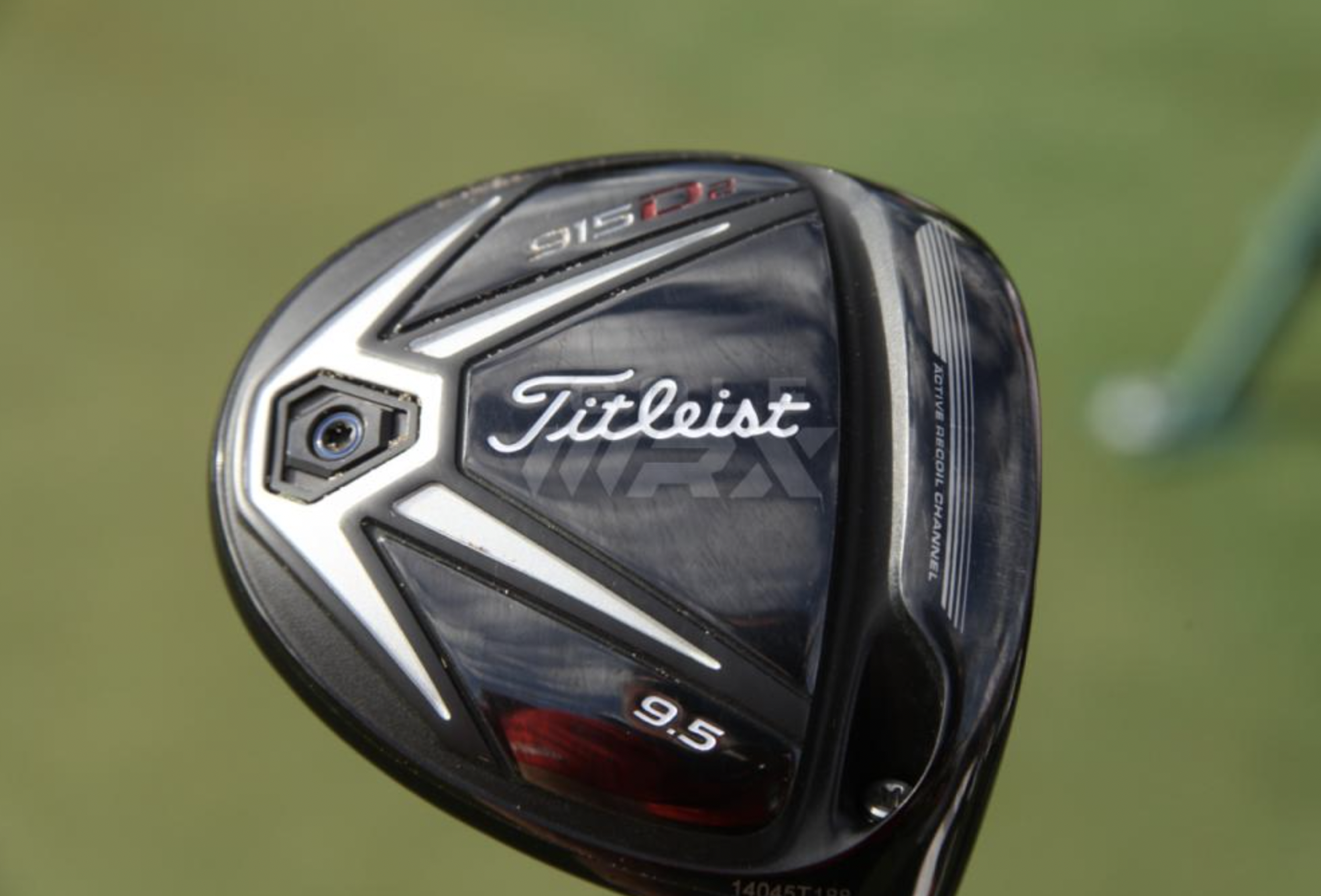
3-wood: Titleist 915F (15 degrees) Buy here.
Shaft: Graphite Design Tour AD DI 7 X
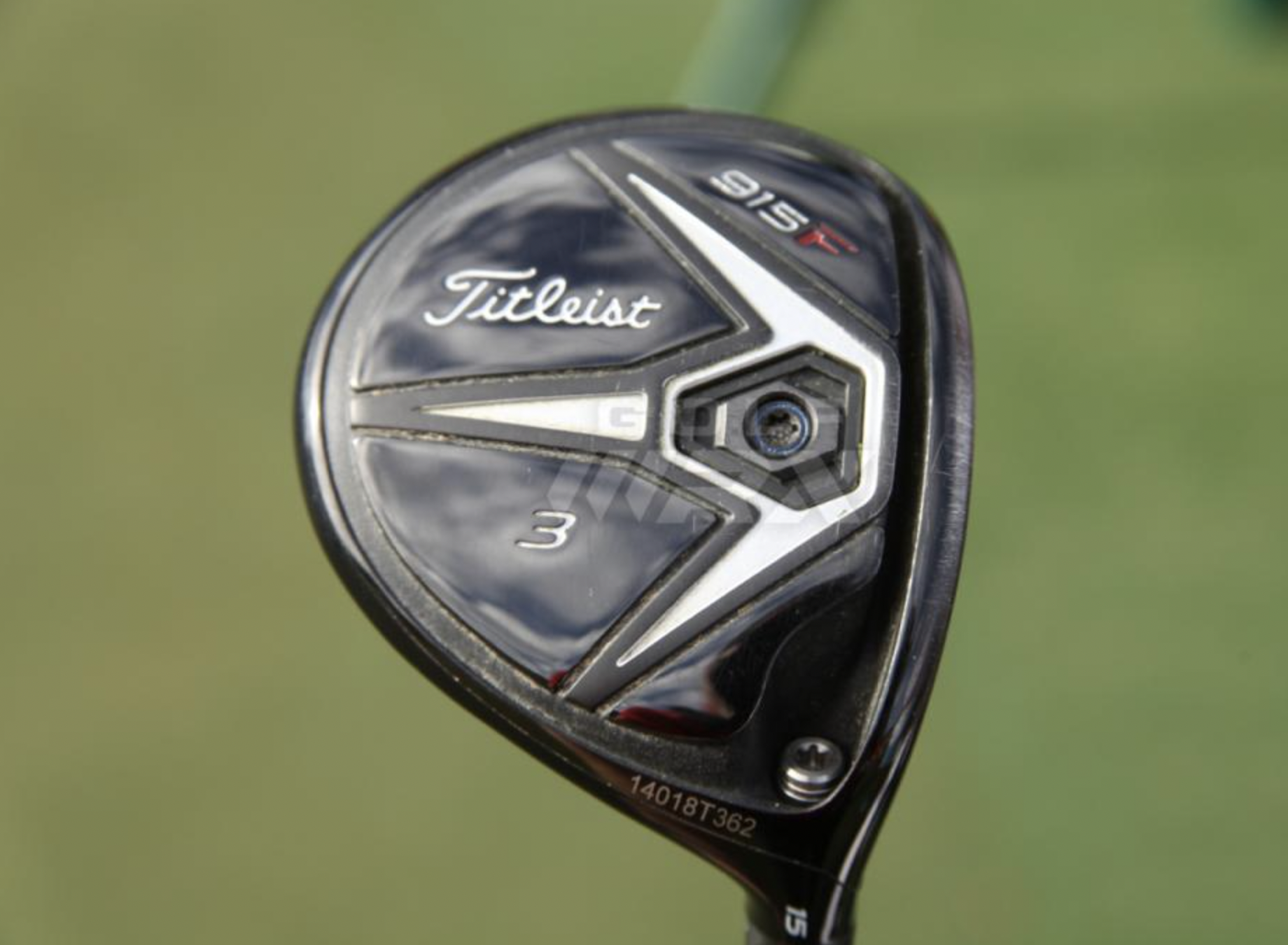
Hybrid: Titleist 915HD (20.5 degrees) Buy here.
Shaft: Graphite Design Tour AD DI 95 X
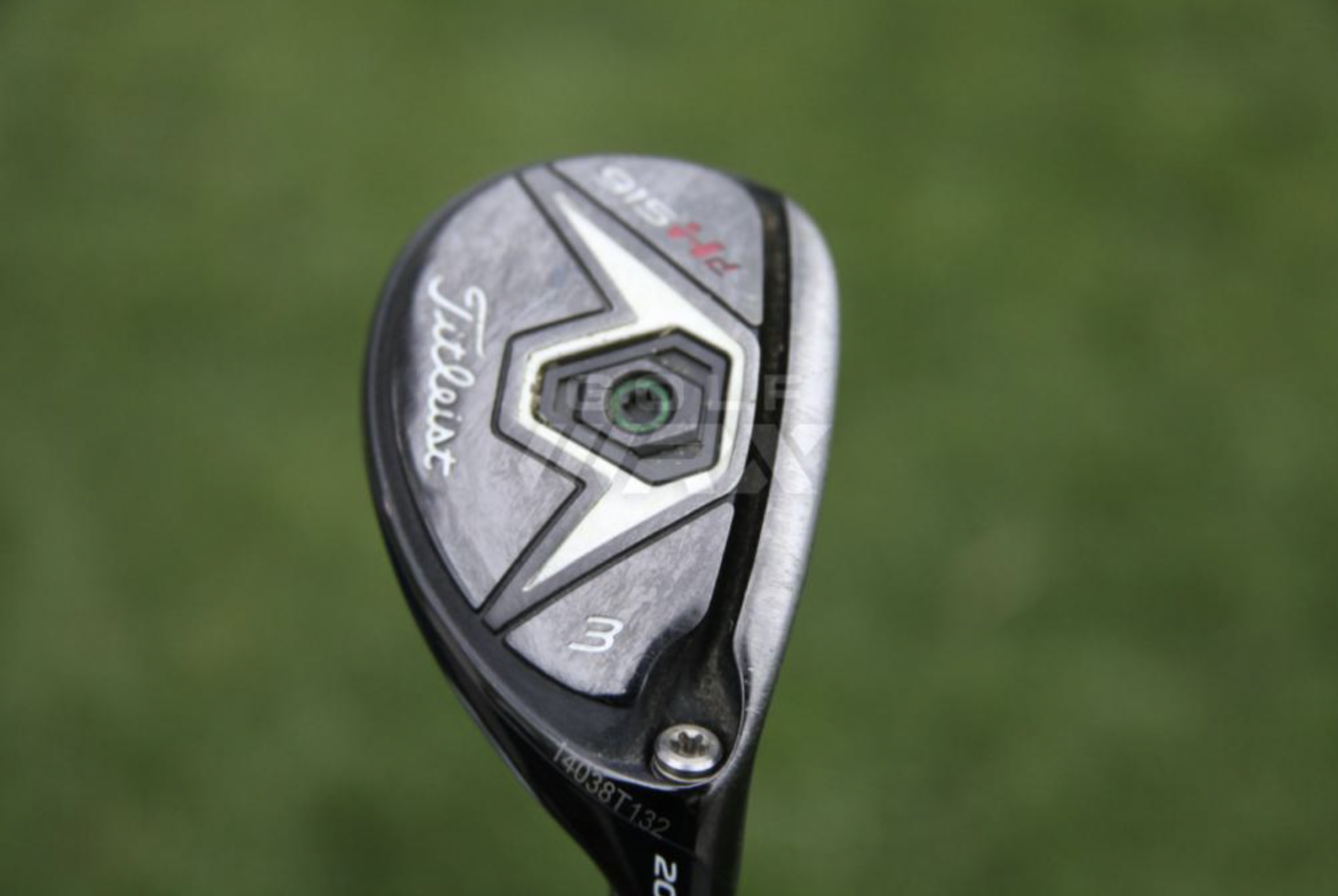
Irons: Titleist 714 AP2 (4-9) Buy here.
Shafts: True Temper Project X 6.0
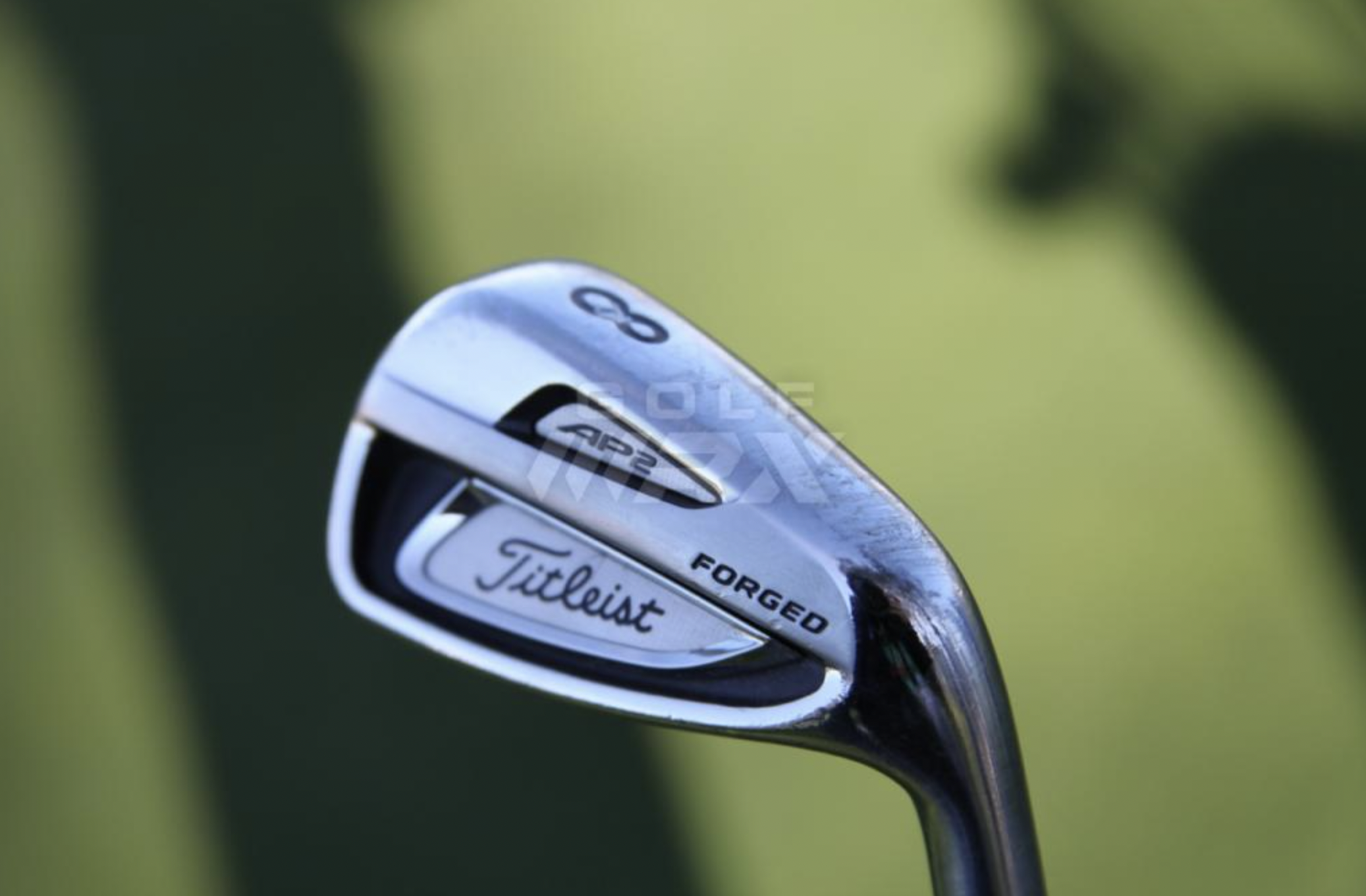
Wedges: Titleist Vokey Design SM5 (46-08F, 52-08F, 56-10S, 60-04L) Buy here.
Shafts: True Temper Project X 6.0
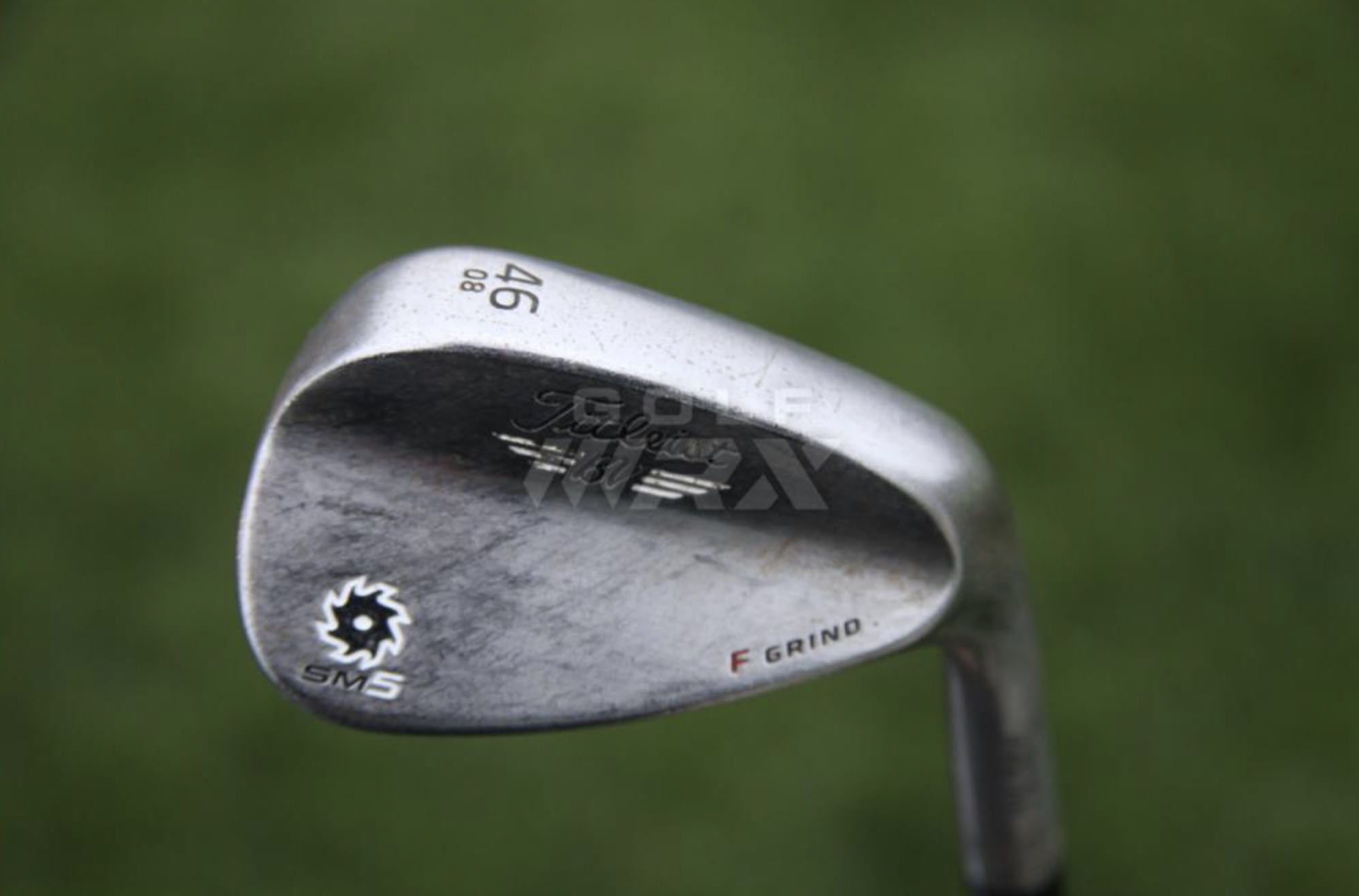
Putter: Scotty Cameron 009 Prototype Buy here.
Grip: SuperStroke Flatso Ultra (Black/White)
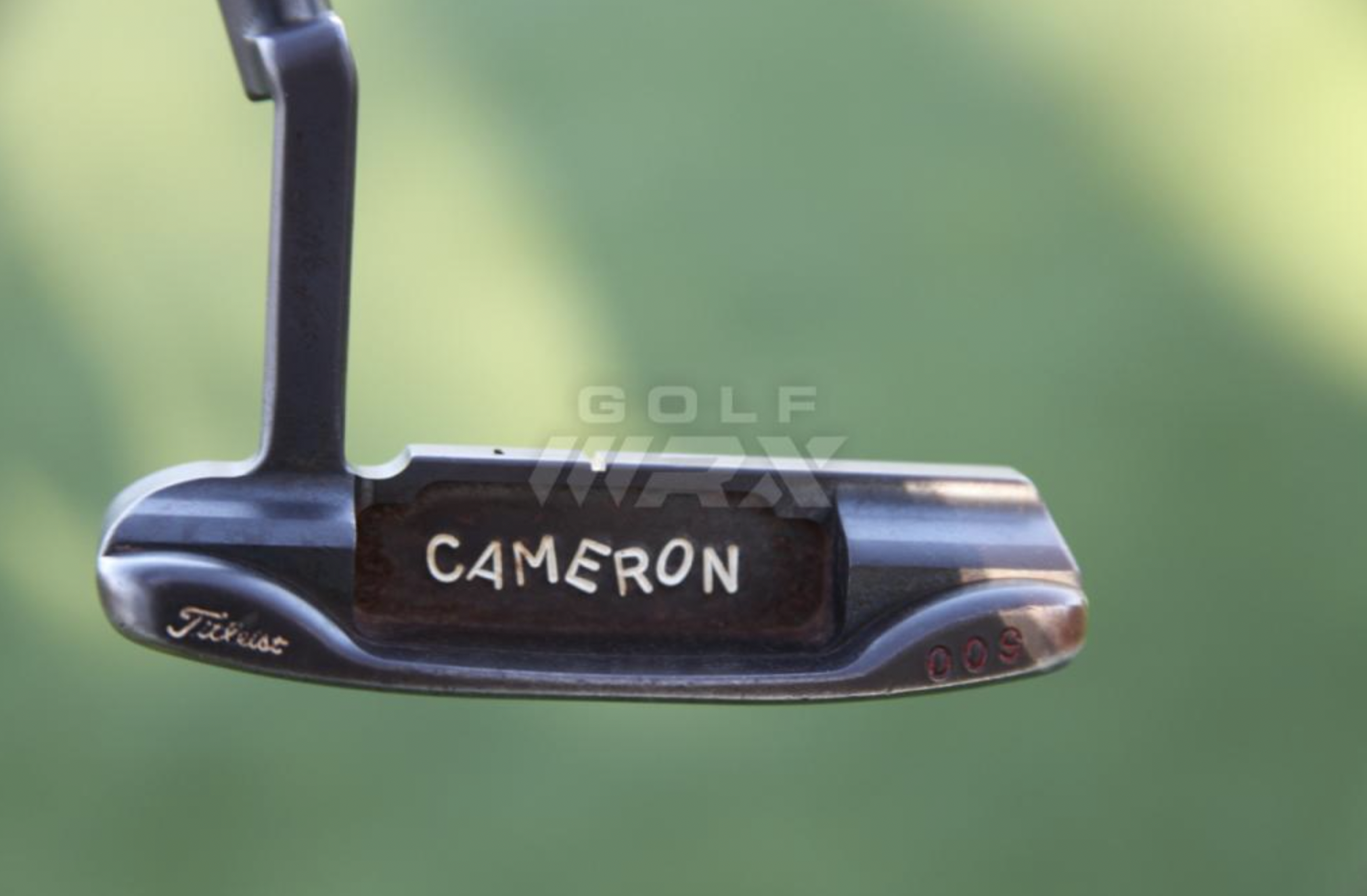
Ball: Titleist Pro V1x
Check out more photos of Jordan Spieth’s 2015 WITB here.
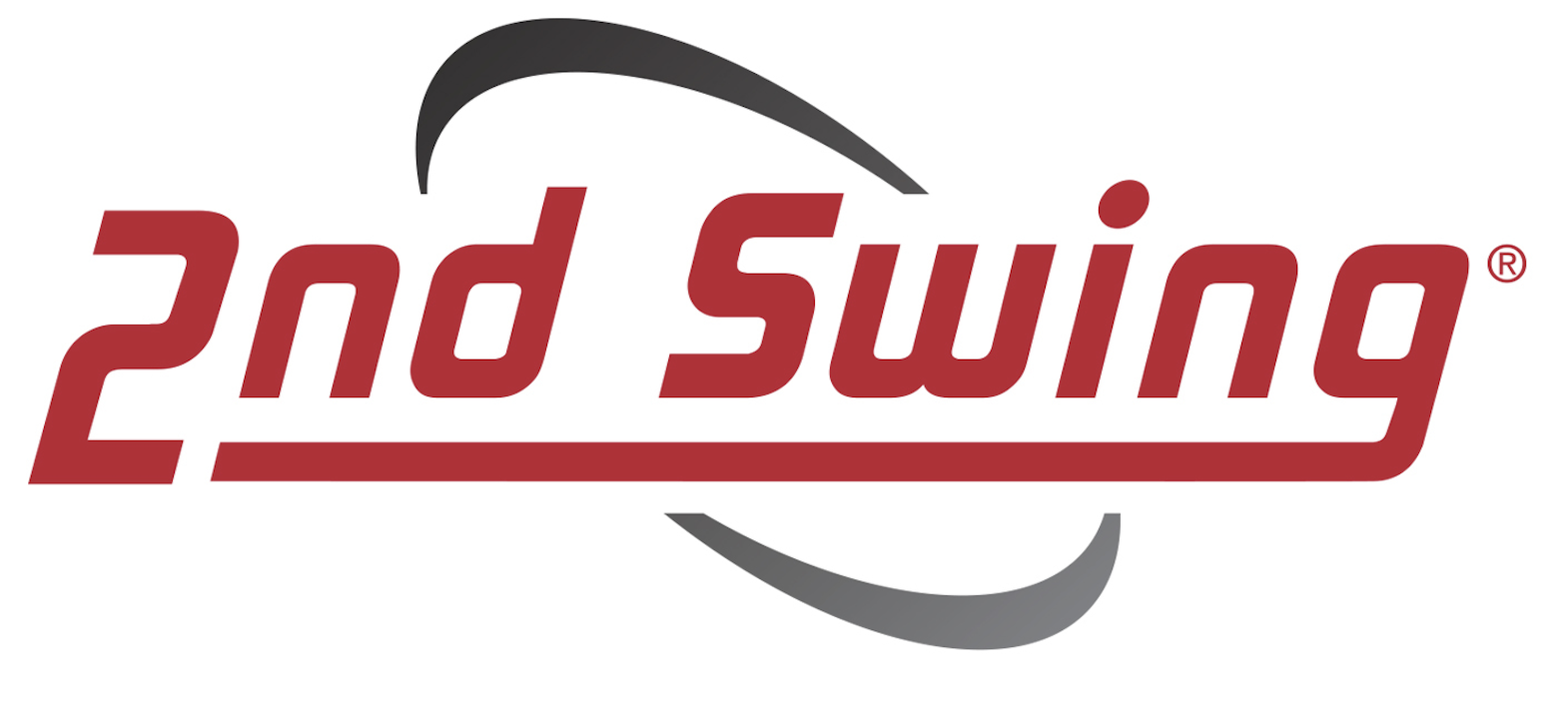
WITB Time Machine is presented by 2nd Swing Golf. 2nd Swing has more than 100,000 new and pre-swung golf clubs available in six store locations and online. Check them out here.
- LIKE1
- LEGIT1
- WOW0
- LOL0
- IDHT0
- FLOP1
- OB0
- SHANK0
Whats in the Bag
Michael Thorbjornsen WITB 2024 (July)

- Michael Thorbjornsen what’s in the bag accurate as of the John Deere Classic. Check out more photos from the event here.
Driver: TaylorMade Qi10 LS (9 degrees @7.5)
Shaft: Fujikura Ventus TR Blue 7 TX


4-wood: TaylorMade Qi10 Tour (16.5 degrees)
Shaft: Fujikura Ventus TR Blue 8 TX

Irons: TaylorMade P790 (2), TaylorMade P770 (3), TaylorMade P7MC (4-PW)
Shafts: True Temper Dynamic Gold X Seven (2), True Temper AMT Tour White X100 (3-PW)


Wedges: TaylorMade MG4 (50-09SB, 56-12SB, 60-09SBC)
Shafts: KBS Tour-V 120 X

Putter: TaylorMade Spider Tour S, Spider Tour X
Grip: SuperStroke Zenergy Tour 3.0 17


Grips: Golf Pride MCC
See more in-hand photos of Thorbjornsen’s WITB here.
- LIKE3
- LEGIT1
- WOW0
- LOL0
- IDHT0
- FLOP0
- OB0
- SHANK1
-

 News1 week ago
News1 week agoExperts on understanding ground force and how shoes can impact your golf game
-

 19th Hole3 weeks ago
19th Hole3 weeks ago‘Most overrated course in the world!’ – Major champ rips ‘awful’ Pinehurst No. 2
-

 19th Hole3 weeks ago
19th Hole3 weeks agoAimPoint under attack again as footage from U.S. Open enrages golf fans
-

 Equipment2 weeks ago
Equipment2 weeks agoMiura launches new forged wedge series
-

 19th Hole2 weeks ago
19th Hole2 weeks agoRory McIlroy releases statement following crushing U.S. Open loss
-

 Equipment3 weeks ago
Equipment3 weeks agoPatrick Cantlay switched driver, irons ahead of the U.S. Open
-

 19th Hole1 day ago
19th Hole1 day ago‘You’re right, we’re always wrong!’ – Sergio Garcia receives warning during Open qualifier
-

 19th Hole2 weeks ago
19th Hole2 weeks agoTour pro says Rory McIIroy needs to replace caddie Harry Diamond following U.S. Open collapse

























